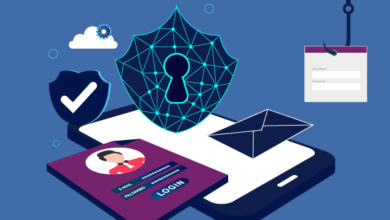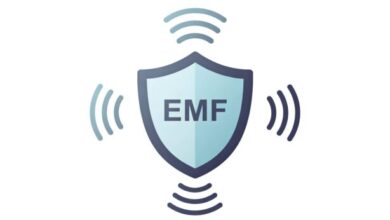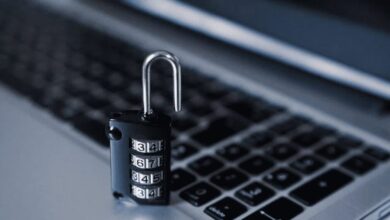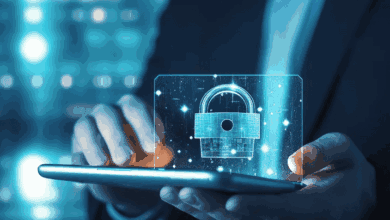Safeguarding Your Emails: Best Practices for Business Email Protection

Email is foundational for communication and operations in today’s digitally-driven business environment. It is a critical tool for sharing information, collaborating across teams, and engaging with clients globally. However, its pervasive use also introduces substantial risks as email systems become prime targets for cybercriminals. Hackers exploit vulnerabilities in email infrastructures to launch various attacks, aiming to steal sensitive information or disrupt operations. Therefore, ensuring robust business email protection is imperative. This requires a strategic approach integrating advanced technological solutions, sound policies, and comprehensive employee education. These strategies are essential for safeguarding data, enhancing the company’s reputation, and ensuring compliance with ever-evolving regulations.
Table of Contents
- Introduction to Business Email Security
- Understanding Common Email Threats
- Best Practices for Protecting Business Emails
- The Role of Technology in Email Security
- Legal and Compliance Considerations
- Educating Your Team
- The Future of Business Email Security
Introduction to Business Email Security
As a core communication medium, emails facilitate the swift exchange of ideas, documentation, and critical directives within modern enterprises. Despite its benefits, this dependence makes email systems attractive targets for malicious actors continuously refining their methods. Consequently, businesses face growing pressure to deploy robust security measures to thwart these threats. Failing to secure email systems can lead to severe consequences, including financial setbacks, reputational damage, and legal penalties. Understanding the imperative nature of email security and continually adapting to new threats ensures businesses remain resilient amidst the cyber threat landscape. You may check https://www.group-ib.com/products/business-email-protection/ for more valuable information about email protection strategies for your business.
Understanding Common Email Threats
Cyber threats to email systems are multifaceted and constantly evolving. Phishing and malware attacks stand out due to their prevalence and potential for significant impact. Organizations must be aware of these threats to create effective defense strategies capable of protecting sensitive corporate information.
Phishing
Phishing attacks deceive recipients into providing confidential information by masquerading as legitimate communications from trusted sources. These often involve fake emails urging the immediate correction of fictitious account issues or requesting confirmation of sensitive data. Phishers trick individuals into hasty actions by exploiting human psychology—particularly emotions like fear or urgency. Organizations can mitigate these risks by fostering a culture of skepticism and awareness. Regular training sessions illustrating common phishing tactics and simulations empower employees to recognize and report phishing attempts.
Malware
Malware, short for malicious software, encompasses a range of harmful programs such as viruses, worms, and ransomware. These programs are often distributed through seemingly innocuous email attachments or links. Malware can compromise systems, steal data, or cause operational disruptions when executed. To counteract these threats, businesses must implement multiple layers of security, including secure email gateways, updated antivirus software, and continuous monitoring. Routine audits and penetration tests also help identify vulnerabilities, ensuring that defenses remain responsive and capable of mitigating emerging threats.
Best Practices for Protecting Business Emails
Implementing effective email security practices is critical for maintaining the integrity and confidentiality of business communications. These practices should be tailored to the organization’s specific needs and adjusted regularly to adapt to the dynamic threat landscape:
- Two-Factor Authentication: Enforcing two-factor authentication (2FA) adds an essential layer of security to email systems. Organizations can significantly reduce the risk of unauthorized access by requiring users to provide an additional verification element alongside traditional passwords, such as a code sent to a mobile device.
- Email Encryption: Encryption is a fundamental security tool that encodes email content to prevent unauthorized access. By encrypting emails and their attachments in transit and at rest, businesses safeguard data from interception during transmission and protect stored information from unauthorized access.
- Regular Updates and Maintenance: Ensuring software and security protocols are up to date is vital. Regular updates address known vulnerabilities and enhance the overall security posture, reducing the potential attack surface for cybercriminals. Continuous system maintenance aids in maintaining optimal performance and security.
The Role of Technology in Email Security
Integrating advanced technologies is pivotal in strengthening an organization’s email security infrastructure. Artificial intelligence (AI) and machine learning have transformed security measures, offering the capability to detect and respond to threats with unprecedented speed and accuracy. These technologies can analyze large volumes of data to identify patterns and anomalies indicative of fraudulent activity. AI’s predictive capabilities allow organizations to counter threats before they inflict harm preemptively. TechTarget’s insights emphasize the transformative impacts of these tools in refining threat detection and response protocols.
Legal and Compliance Considerations
Adhering to legal standards such as the GDPR and HIPAA is essential for organizations that handle sensitive information. These regulations require stringent data protection controls to ensure privacy and security. Compliance helps mitigate the risk of legal actions while enhancing customer confidence in an organization’s ability to protect its data. Maintaining compliance involves periodic audits to assess adherence to standards and updating policies to reflect regulation changes. Comprehensive security policies aligned with these legal frameworks contribute to sustainable business growth and operational success.
Educating Your Team
While technology is crucial, the human factor in email security cannot be underestimated. Employees represent both a potential risk and a line of defense. Organizations must prioritize ongoing staff education to mitigate human error or negligence risks. Training programs should focus on imparting knowledge about emerging threats, best security practices, and proper response protocols. Interactive training methods, including phishing simulations and threat recognition exercises, help reinforce awareness and preparedness. Cultivating a security-conscious culture empowers employees to act vigilantly and responsibly in the face of email threats.
The Future of Business Email Security
The rapidly evolving nature of the cyber threat landscape necessitates continuous advancements in email security strategies. To remain protected, businesses must remain agile and responsive to new challenges and opportunities. Investments in innovative security technologies, ongoing personnel training, and an emphasis on proactive threat management are essential. As threats become complex, businesses will increasingly rely on predictive analytics and automation to enhance security measures. According to guidelines from the CISA, staying ahead in the cybersecurity arms race requires embracing emerging technologies and fostering an adaptive security culture capable of meeting the demands of tomorrow’s digital world.
In conclusion, safeguarding email communication is foundational to business resilience and success. By integrating advanced technologies, implementing best practices, fostering employee education, and ensuring regulatory compliance, organizations can build robust defenses against potential threats. Such efforts protect valuable data, enhance stakeholder trust, and ensure continuity in an increasingly interconnected and competitive global business environment.




